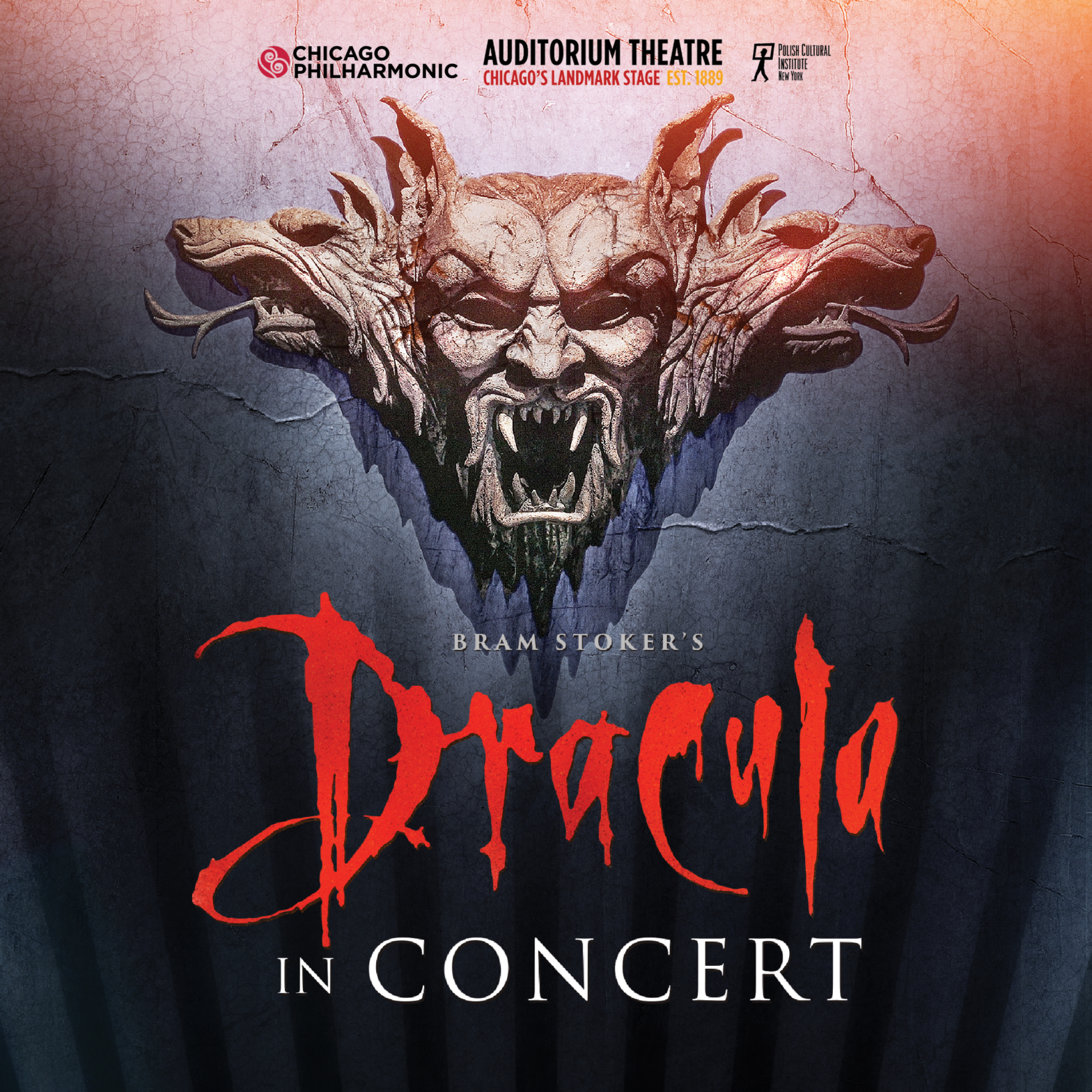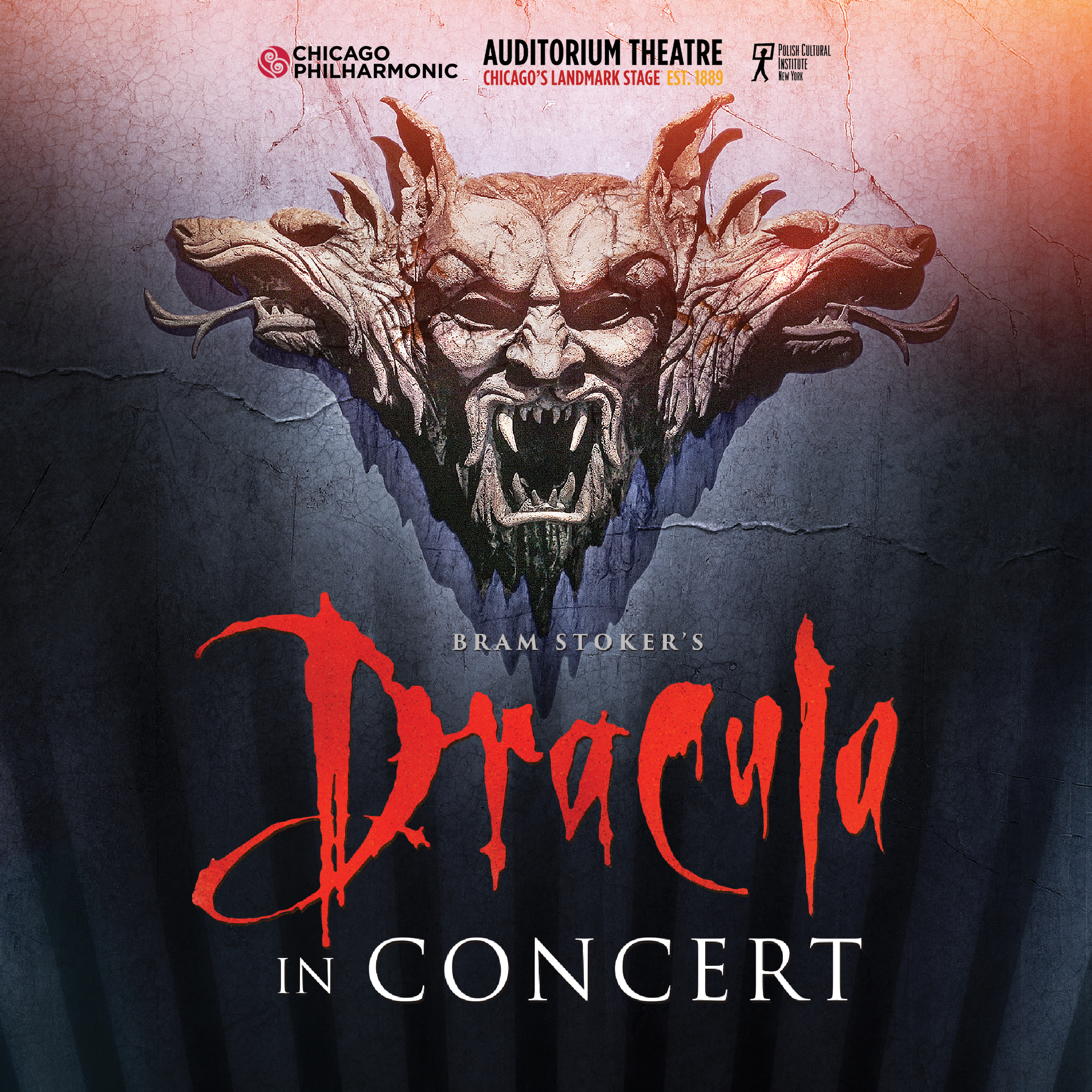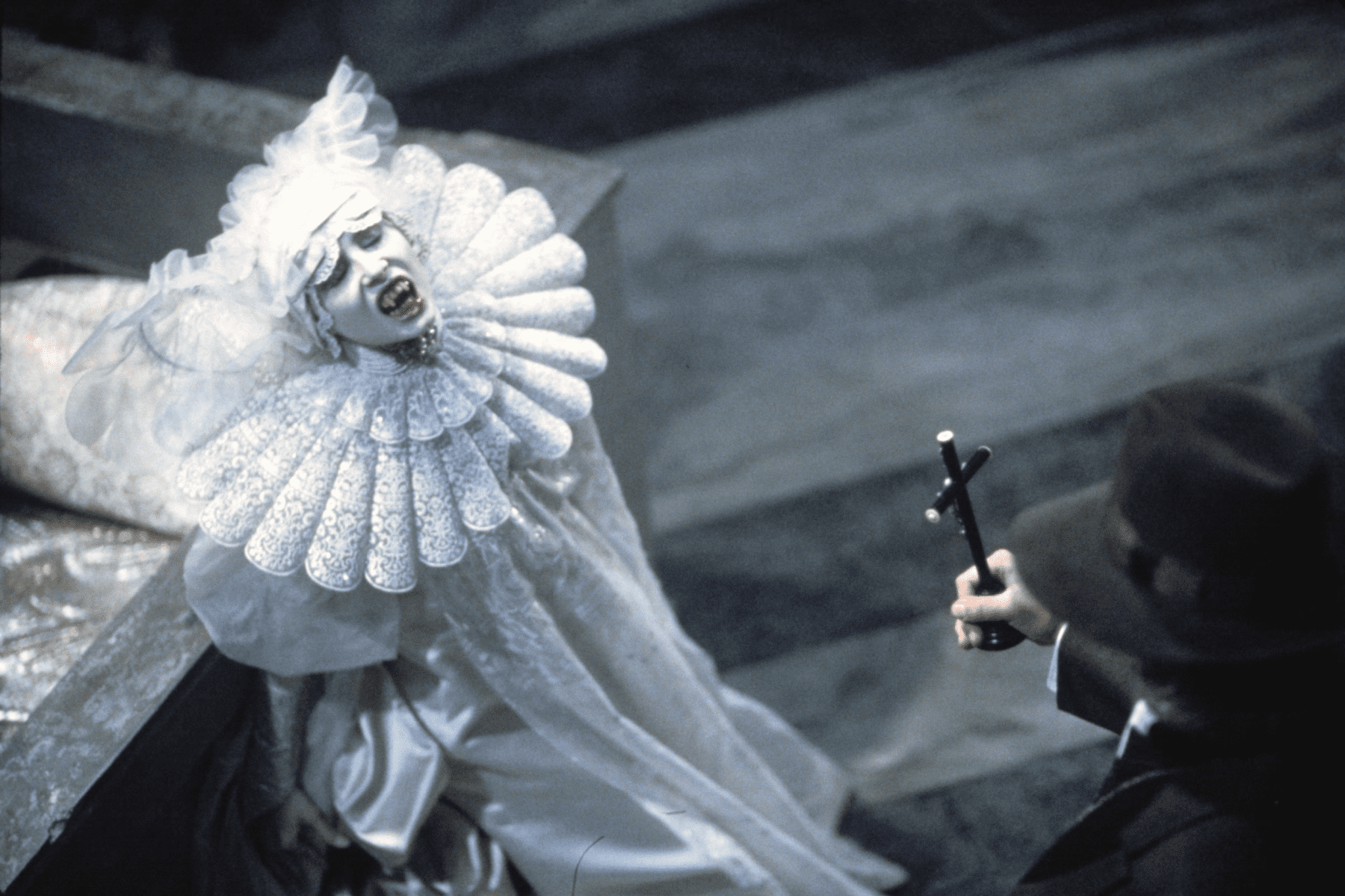“I want the score for DRACULA to be like a Prokofiev score for Eisenstein. I want it to be performed by symphonies. I want great music. Not just theater music, but great music.”
— Francis Ford Coppola on the score to Bram Stoker’s Dracula (1992)
On November 9, 2024, the Chicago Philharmonic performs the U.S. Premiere of Bram Stoker’s Dracula in Concert, as part of the orchestra’s historic partner series with the Auditorium Theatre, Auditorium Philms. The famed 1992 Francis Ford Coppola movie will play on a 50-foot screen above 110 musicians (full orchestra and choir) performing the score by Polish composer Wojciech Kilar.
Wojciech Kilar (1932-2013) was a titan of Polish orchestral and choral music in the 20th century, and a rare composer whose music could shift from ultra-modern classical to religious stoicism to Hollywood film scores—the most famous of which were Roman Polański’s The Pianist and Francis Ford Coppola’s Dracula.
Creating Francis Ford Coppola’s Bram Stoker’s Dracula
When Francis Ford Coppola created his version of Dracula, he stayed partially true to the 1897 novel written by Irish author Bram Stoker. Stoker’s story, originally a Victorian tale of repressed lust given demonic form, was a classic monster horror. Coppola added elements of romance and over-the-top raunchiness, aided by century-old special effects.
“The period of the turn of the century was the birth of movies,” Coppola said. “And movies, as you know, largely came about because of magicians who started to use the cinema to make illusions…. That’s when I became excited about the idea of [having] this story 100 percent shot in soundstages and not only using illusions and magic, and effects, but using effects as they were done at the turn of the century, which was in-camera.”
Dracula was also aided by exaggerated performances from Gary Oldman, Anthony Hopkins, Winona Rider, and Tom Waits. Adding lush costumes by designer Eiko Ishioka catapulted the film to iconic heights. In 1992, it was a box office smash, and remains a favorite for horror enthusiasts over 30 years later.
Wojciech Kilar’s Dracula
When it came to the movie’s equally iconic score, Coppola wanted music that was full, traditionally orchestrated, and gave the sense of a long-forgotten, dreamlike world. Seeking a composer with Eastern European roots, Coppola soon came across Polish composer Wojciech Kilar. An acclaimed and accomplished composer in Europe, Kilar had been professionally composing classical works for both the stage and screen since completing his studies with the iconic French music teacher Nadia Boulanger in 1960.
Coppola gave Kilar full artistic control of the music: “Listen, I’m a director, I made the film. You’re a composer, you’ve seen the film, do what you want.”
Kilar’s response was a theatrical, full-bodied piece for orchestra and choir. The opening piece for the film’s six-minute prelude, aptly titled Dracula – The Beginning, uses a simple melody to build to a menacing climax as Count Dracula renounces God and becomes (presumably) the first vampire. The film only gets crazier from there – but Kilar’s music acts as a masterfully grounding force marrying Gothic horror, nostalgic romance, and orchestral power.
Clocking in at nearly seven minutes long, this opening sequence highlights the dexterity with which Kilar manipulates and highlights the high emotions running throughout the film. Carefully utilizing each and every performer in the 100-piece Los Angeles orchestra and 50-person choir he had at his disposal (conducted by Anton Coppola), the weight and skill of the talent behind the scenes provide a truly immersive sonic experience. Much like the film itself, Kilar’s “old school” approach to instrumentation and orchestration imbues the score with a wonderfully timeless feel. Sonically connecting Dracula’s past with his present, this use of traditional instruments blurs the lines of time and allows the story to transcend such arbitrary constructs.
30 years later, Kilar’s Dracula is a paragon of morbid melodrama and technical mastery. Chicago Philharmonic makes the film-in-concert’s U.S. Premiere for one night only at the Auditorium Theatre on November 9, 2024. Tickets are available at auditoriumtheatre.org.



